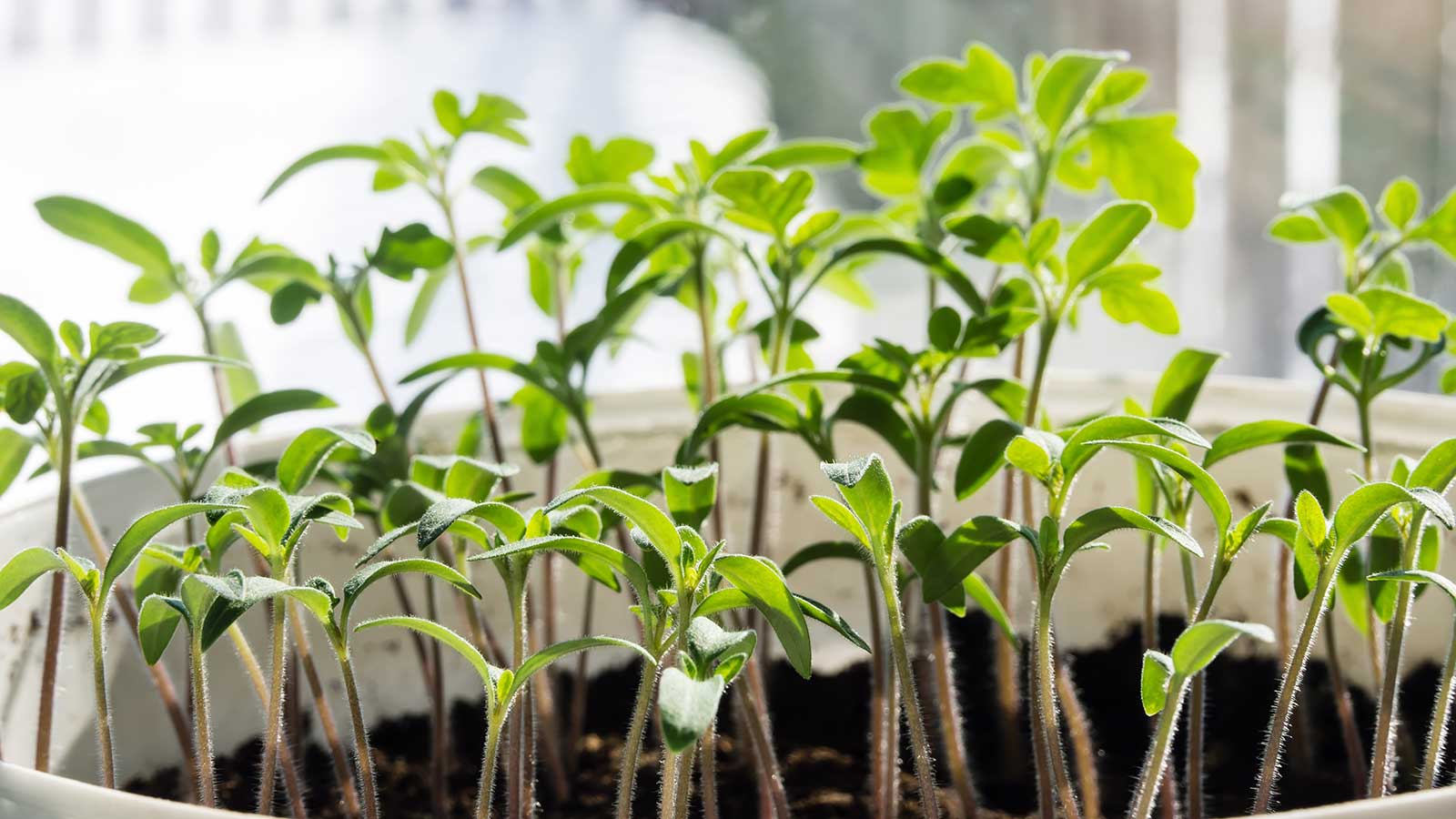
Q: I have started growing annuals indoors from seed, ready for planting out when the frosts finish. They're growing on my kitchen window sill, and germinated well, but now the seedlings are looking weak and leggy. What has caused this, and can they be saved?
A: One common reason behind leggy seedlings is insufficient light. On window sills, this is usually because the light is only coming from one direction. 'Plants grow towards light (a process that’s known as phototropism) and if this only comes from one side then leggy, stretched seedlings result,' explains Lucy Chamberlain, a gardening expert.
Leggy growth can also be encouraged by too high a temperature, explains John Negus, an expert from Homes and Gardens. When starting seeds indoors, they should be sown shallowly in proprietary seed compost at a temperature of around 64˚F, he says. 'If the temperature is higher, they grow so rapidly that they quickly become exhausted and collapse.'
How to save leggy seedlings
In some cases, it's easiest to cut your losses and start again by sowing fresh seeds. However, if you want to try and rescue your leggy seedlings, you can try pinching them back. This can encourage bushier growth, depending on what type of plant it is.
Using clean scissors or your forefinger and thumb, shorten the shoots, leaving at least two pairs of leaves from the base. Then, place the trays or pots somewhere cooler in good light (you can follow the tips below for extra chance of success). Ensure you thin them out when needed, too.
When it's time to transplant them into larger pots, some plants, including tomatoes, can be planted slightly deeper into the soil, up to the first leaves.

3 ways to prevent leggy seedlings
Whether you've tried to save your seedlings or have started a new batch, follow these tips to prevent the problem from happening again.
1. Move your seedlings to somewhere more suitable
Positioning is key for preventing leggy seedlings, so ensure you get this right for the best results. You want somewhere with plenty of bright, indirect light so that they can grow strong.
'Bay windows, porches, conservatories or greenhouses offer the best results,' says Lucy. However, ensure your greenhouse is clean: 'Dirty glass can block out anything from 30-50% of the sunlight hitting it.'
2. Turn the seedlings
If possible, give each pot a half-turn (180˚) every day, suggests Tim Rumball, a gardens writer. This will draw the seedlings in the opposite direction every 24 hours, he explains, ultimately resulting in upright growth.

3. Make a reflector box
If you don't have a spot with perfect lighting conditions or the time to turn your seedlings daily, you can still avoid the seed sowing mistake of not providing enough light by making a simple reflector box. Tim Rumball explains how to do it:
- Cut a small, stout cardboard box in half diagonally (corner to corner) to make a tray with a base, a steep back and sloping sides.
- Line the inside completely with aluminum baking foil.
- Set it on the sill with the steep back closest to you, then stand a tray of pots or a propagator on it. The foil reflects light coming through the window onto the back of the seedlings, resulting in straighter growth.
Alternatively, Lucy suggests simply placing a length of white card behind your window sill plants to reflect the light.

With these tips, you'll be able to raise stronger, healthier seedlings that, with a bit of luck, will turn into robust plants. Just remember to harden off seedlings before planting them out, so that the drastic change in environment doesn't shock them.







